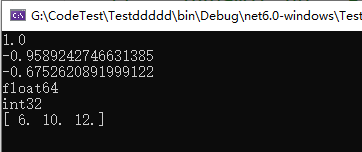程序健壮性最基本要求就是程序错误的处理与捕捉,在ASP.NET中,错误的处理有和其他编程语言一样的机制,可以使用Try…Catch…Finally等方式,这一点和ASP相比具有较大的进步。而且,使用这些错误处理方法,可以大大提高程序的可读性和程序调试速度,在这几个优势结合的情况下,我们更加应该注意这一点。 关于错误的处理,我们可以参考这篇文章: Try...Catch...FinallyinASP.NET Introduction ErrorhandlinginClassicASPwasnotthebest.WewerehavingonlylimitedoptionsavailableforerrorhandlinginClassicASPsuchas,"OnErrorResumeNext".InASP3.0wesawthenewASPobjectcalledErrorObject.Butwewerenotabletohandleallexception/errorsefficiently.NowinASP.NETwehaveanewerrorhandlingmechanismwhichwasalreadytheirinotherlanguagessuchasC,C++andJAVA.Wecanalsocallthetry...catchmechanismas"ExceptionHandling" WhatisTry...Catch....Finally ThisisanewerrorhandlingmechanisminVB.NET,soasinASP.NET.Wellwehavethreeblocksofcode,wereeachblockhasitownfunctionality.TheTry...Catch...Finallyblockofcodesurroundsthecodewhereanexceptionmightoccur.ThesimpleTrystatementcomesbeforetheblockofcode,theCatchblockofcodeiswherewespecifywhattypeoferrortolookfor,andtheFinallyblockofcodeisalwaysexecutedandcontainscleanuproutinesforexceptionsituations.Sincethecatchblockisspecifictothetypeoferrorwewanttocatch,wewilloftenusemultipleCatchblocksinourTry...Catch...Finallystructure. AsimpleDatabaseoperation DimmySqlConnectionasNewSqlConnection(ConnectionString) DimmySqlCommandasSqlCommand DimstrSqlasString strSql="insertintoyourtable(f1,f2)values('f1','f2')" mySqlCommand=newSqlCommand(strSql,mySqlConnection) Try mySqlConnection.Open() mySqlCommand.ExecuteReader(CommandBehavior.CloseConnection) Message.text="NewForwardinformationadded" CatchSQLexcassqlexception Message.text=Message.text+sqlexc.tostring() Catchexcasexception ifInstr(1,exc.tostring,"duplicatekey")>0then Message.text=Message.text+"Cannotinsertduplicatevalues." else Message.text=Message.text+exc.tostring() endif Finally mySqlConnection.Close() EndTry Whatdoestheaboveexampleexactlydo? Well,intheaboveexampleweweretryingtoinsertsomevaluestoadatabasetable.Thepossiblechanceswhileperformingadatabaseoperationareinvalidconnectionstring,databaseservertoobusyresultinginconnectiontimeout,databaseservernotcurrentlyrunningetcetc.Weshouldanticipatealltheseerrorswhileperformingadatabaseoperation.So,wehaveaTryblock,whichcontainsthestatementssuchasopeningtheconnectionandexecutingtheoperation.Basically,wehavetwomajorstatementsinsidethetryblockwhichmayresultinanexception/error. AsIsaid,anyexceptioncanoccurduringadatabaseoperation.CatchingalltheseexceptionisnowveryeasywiththeCatchblock.AllweneedistohaveaCatchblock.WecanhaveanynumberofCatchblocks.EachCatchblockmayhaveadifferenterror/exceptiontrappingmechanism.Intheaboveexample,wehavetwocatchblocks,onewhichcapturesageneralexceptionandtheotheronewhichtrapstheSqlException. Whenallthestatementsinsidethecatchblocksareexecuted,thefinallyblockcomesintothepicture.AsIsaidearlier,finallyblockcontainscleanuproutinesforexceptionsituations. ExitTrystatement WecanalsohavetheExitTrystatementinsideanyofthetry...catchblock.TheobjectiveofthisstatementistobreakoutoftheTryorCatchblock.OncetheExitTrystatementisexecuted,thecontrolgoestotheFinallyblock.So,ExitTrystatementcanbebestusedwereweneedtoexecutethecleanuproutines. HowaboutnestedTrystatments? WecanhavenestedTryandCatchblocks.Canyouimagine,whenweshouldusenestedtrystatements.Well,errorscanoccurwithintheCatchportionoftheTrystructures,andcausefurtherexceptiontooccur.TheabilitytonesttrystructuresisavailablesothatwecanuseasecondTrystructuretocoverexceptions. Links http://www.vbweb.co.uk/show/1889/2/http://www.oreillynet.com/pub/a/dotnet/2001/09/04/error_handling.html?page=2
到此这篇关于asp.net 的错误处理机制讲解就介绍到这了。志在山顶的人,不会贪念山腰的风景。更多相关asp.net 的错误处理机制讲解内容请查看相关栏目,小编编辑不易,再次感谢大家的支持!





